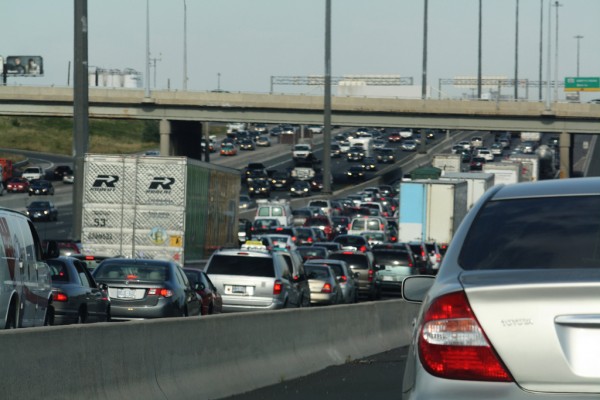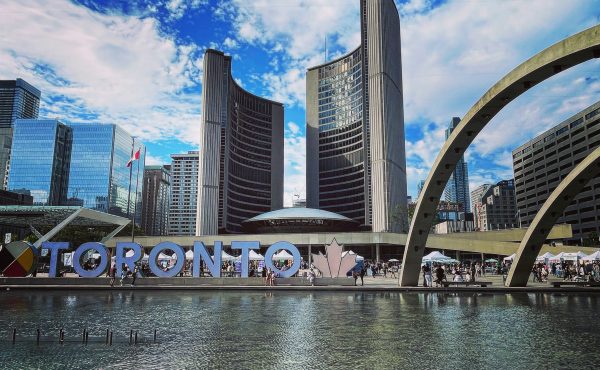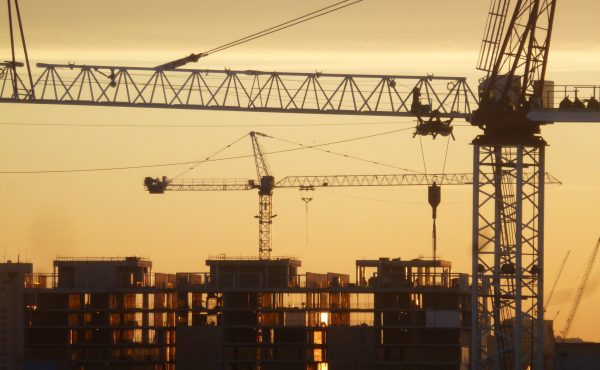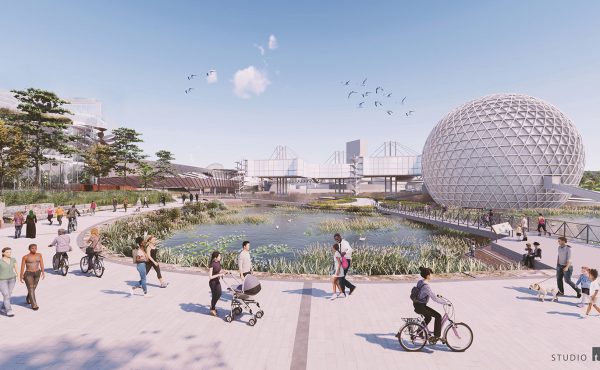
Why have Kathleen Wynne’s Liberals suddenly started talking about capping tuition fee hikes (at 3%, down from 5%) and auto insurance premiums, the latter a long-standing demand by the NDP?
On its face, the government appears to be looking for a political détente with Andrea Horwath in the run up to this year’s provincial budget, which, if defeated, would trigger a general election. But I’m surmising that Wynne — who traded shots with Horwath this week about the new taxes required to fund regional transit in Greater Toronto — is playing the long game, and it’s all about The Big Move.
Aware that she’s facing a defining moment with the long-awaited June 1st release of Metrolinx’s revenue tools recommendations, Wynne seems to be looking for ways to cut expenses for Ontarians in the run-up to a contentious debate over the adoption of measures that will effectively claw back those reductions. In other words, the government wants to be able to say to voters (and the opposition parties), “Hey, these new levies and taxes will be off-set by the cuts we’ve already approved, so you won’t end up falling further behind.” To use the hoary old political cliché, “revenue neutral.”
Horwath, meanwhile, is staking out an infuriatingly vague position, with her calls for a “fair and balanced” approach to raising revenues for transit, among them suggestions for a corporate tax hike.
This whole debate, which is getting warmer by the day, will take a new turn later Tuesday morning when Metrolinx reveals a short list of proposed revenue tools.
The long list — a 230-page report, prepared by AECOM and KPMG that evaluates 25 revenue tools — was released with little fanfare two weeks ago, on the same day the Toronto Region Board of Trade announced its recommendations.
While this report received scant public attention, it is a key document in the debate that will play out over the next two months and well worth reading for those who want to figure out how Metrolinx came up with its Oscar© nominees.
Here’s the trailer: AECOM/KPMG assessed all 25 tools[i] according to a series of 18 criteria grouped into seven broad categories: revenue potential, cost, overall impact on behaviour and network performance, technical implementation considerations, governance, equity and distributional impact, and economic efficiency. For each criteria (e.g., revenue sustainability), the consultants scored every tool on a scale of one to five (i.e., worst to best). The report has a table on page 225 that summarizes all these scores.
So for example, an increase in corporate income taxes rates a four for revenue potential (high), only two for time-savings, and five for “vertical equity,” which is the term the report uses to gauge how progressive each measure is.
The report also provides estimates on the short- and long-term annual revenue potential for each tool (e.g., $170 million to $310 million annual from a 0.5% increase in the corporate tax rate). And it includes some commentary on how each tool can be implemented, case studies from abroad as well as lessons for Metrolinx. I’d say the agency got its money’s worth, but this is still raw data.
According to John Howe, who is spearheading Metrolinx’s investment strategy evaluation, the agency must now refine its analysis by asking questions such as these:
- What are the relative weights of the various criteria? For example, is “revenue potential” more important than “ease of implementation,” and if so, how much more important?
- What are the broad objectives of the investment strategy, and how will the choice of tools reflect those goals? In other words, if the goal is to alter commuter behaviour and reduce emissions, then the focus should be on tools such as a fuel tax. But if the objective is to ensure that those who pay extra will also benefit from the transit investments, (“horizontal equity”), then one might choose land value capture.
- Is it preferable to have several smaller taxes targeting various user groups, as is done in Vancouver with Translink, or just a few very broad taxes, e.g., Los Angeles and its regional sales tax levy?
Metrolinx vice-president of communications Judy Pfeifer says the agency in the coming weeks will release two more reports. One will lay out a more precise statement of values, based on both the AECOM/KPMG evaluation and the results of the feedback collected during Metrolinx’s consultation sessions. The second will show how various levies or combinations of fees will impact household budgets.
This latter report, I fearlessly predict, will not only attract “above-the-fold” and somewhat screechy media coverage, but also marks the moment when Metrolinx finally begins to attract the broad public engagement it claims it has been seeking.
![]()
Scoring the revenue tools
While the AECOM/KPMG report lacks a lot of crucial information, its scoring matrix does invite some back-of-the-envelope number-crunching. I decided to assess each revenue tool using two filters:
- The number of scores of “4” or “5” it received;
- The combined score for the three criteria that will (in my judgment) be of particular interest to politicians of various political stripes: revenue potential, “vertical equity” (i.e., whether the tax is progressive or not) and economic efficiency (i.e., impact on GTA businesses).
For (1), the following tools scored a 4 or 5 in the highest number of evaluation criteria: cordon charges, employer payroll tax, transit fare increases, fuel taxes, High Occupancy toll lanes (HOT), sales tax, highway tolls, and the vehicle kilometres travelled (VKT), which, Metrolinx officials admit, is not presently in use on a broad scale. Of those, just four — employer payroll tax, fuel tax, sales tax, and tolls — are deemed to be serious money makers.
For filter (2), the list from (1) grows to include carbon tax, land value capture, development charges, tax increment financing, parking sales tax, parking levy, corporate and general income tax, new vehicle sales tax, property tax, transportation utility levy, and the vehicle registration fee. (The acknowledged limitation of (2) is that the sum of the scores for individual criteria is an imprecise statistic because it doesn’t reflect their relative weightings.)
If Horwath’s advisors are tuning in, incidentally, the corporate income tax scores very well on equity and very poorly on economic impact. And contrary to her claims during last week’s speech at the Board of Trade, neither development charges nor land value capture generate significant revenue (both scored just 2).
Using a much more granular analysis, Metrolinx will spend the next two months making a strong public policy case for the finalists that will be released today. This past Friday, agency officials insisted their recommendations wouldn’t include any political hedging. Choosing a seasonal metaphor, Pfeifer said, “Our stuff [will be] fully baked.” Carving the turkey will fall to the politicians around the cabinet table.
![]()
[i] Auto insurance tax, car rental fees, carbon tax, cordon tax, corporate income tax, development charges, driver’s license tax, employer payroll tax, transit fare increases, fuel tax, HOT lanes, highway tolls, hotel and accommodation levy, income tax, land transfer tax, land value capture, new vehicle sales tax, parking sales tax, parking space levy, property tax, sales tax, tax increment financing, transportation utility levy, vehicle kilometre traveled fee (VKT), vehicle registration fee
photo by Danielle Scott





7 comments
A 1443% increase in land value for a mid market hotel with rail service, in the AECOM paper, must be an error.
Idiotic assessment of fare increases as a tool. This is their supposed justification:
“In Baltimore, Maryland an increase in public transit fares was proposed in early October 2011 as
one of the ways to finance Maryland’s growing backlog of transportation costs affecting bus, light rail, MARC and metro service.”
Um, yeah, except that it costs $1.60 to ride the subway in Baltimore, and $64 for a monthly pass. So there is plenty of room there compared to what people pay in other cities to inch fares upwards. Not so in Toronto, which already pays the most expensive transit fares on the continent. You think that might have merited some attention, but no, the report fails to mention this. Nor that riders contribute more to operations already through the farebox than ANY other transit system. You can’t charge more than anyone else and then go back for more — but they missed it.
I went to one of those Metrolinx kiosks and punched in 3 (sales tax, fuel tax and parking levy) of the 4 tools recommended by the Toronto and Region Board of Trade … and lo-and-behold, the $2bn budget balanced.
This means that we do not need an overly large or complicated set of ‘revenue tools’ to raise the revenue that The Big Move supposedly needs…but the challenge is that the Metrolinx estimate of $2bn per year (really $1.5 bn when you take out the 25% ‘earmarked’ for roads, bridges and local transit) … is probably a conservative estimate and not properly adjusted for inflation.
The other big question is the actual rollout plan … which is completely lacking in details since the 2nd Wave projects are not finalized.
This means Metrolinx will have to hold another set of roundtables (this time with the local/Regional municipalities and transit agencies and the public) to finalize the roll-out plan.
Cheers, Moaz
Great piece John. While it is obvious that we need to raise a lot of funding it might be best to phase our funding just as we phase our development. Attach one funding stream to the first phase of development and another to the next phase. The biggest issue Toronto has is changing the anti-tax culture into a a pro development mindset. For that to happen Metrolinx needs to deliver on time and efficiently – they need to demonstrate success.
I actually think Horwath gets it. To her immense credit, she “gets it” more than anyone else! She doesn’t advocate road tolls because she knows her supporters better than anyone – including the Toronto Star which keeps relentlessly advocating that position.
It’s not everyone’s dream to sit in traffic jams on the DVP/QEW, but do it because they can’t afford to live closer to their jobs in the downtown core and it’s still the “fastest” option which allows them to get back to their family at the end of the day in the quickest way possible.
A road toll without viable rapid alternatives unfairly punishes those who cannot afford to live closer to their jobs. Until a realistic light rail/heavy rail alternative presents itself, road tolls should be a last resort and not a first option.
In my opinion, the best option is the Los Angeles plan of a 0.5% regional sales tax. Experts keep saying that transit/gridlock affects us all. If true, then we should adopt a 1% Sales Tax that affects everyone because this tax does not discriminate. It has teeth and we have the existing mechanisms in force to collect it right away.
The Toronto Board of Trade’s 4 options should have been endorsed by Metrolinx.
JW,
in the long run, the solution to the problem is density. Torontonians need to change their living pattern to relocate to smaller, denser, and most likely multiple unit residences located along transit lines, instead of SFH spread all over the places. I agree that sales tax should be a main component here, but taxes that target the auto-dependent life style (gas tax, road toll, parking levy) need to be in there to nudge people towards more efficient living patterns. After all, if you insist on choosing a 4-bedroom SFH with a big yard over 3-bedroom apartment or townhouse, you cannot expect transit to reach your door step so that you can use it, and it is probably not unreasonable to expect you to have means to pay for the higher cost that auto-dependent lifestyle incurs.
I was not going to comment on this since I made my views known on Lorinc’s last piece. But I had to respond to Yu’s comment that the “solution to the problem is density”. I would argue that while density is certainly desireable and an important requirement to a robust transit system, the first step is actually aligning land-use and transit strategies. The glaring inadequacy of the province’s Metrolinx approach is that it is an attempt to put in place a regional transit strategy, when virtually no corresponding steps have taken place to ensure a coherent regional land use strategy (eg. through some sort of regional planning body). The reason that we are in the mess that we are in is because each municipality has been allowed to zone in a way that meets what it thinks is in its best interests, EVEN if it is to the detriment of the other municipalities across the GTA. Developers like this because the can play municipalities off against each other. But the bottom line is that while each municipality does what it thinks is best, ALL of them are worse off because they have all been sticking it to each others. One of the key reasons the GTA is the sprawling mess that it is because there HAS NEVER BEEN any coherent regional land use strategy. Millions of acres of green space and valuable farm land has been gobbled up by low-rise development, resulting in massive congestion, even while developers have reaped billions. Yes, we need to find ways of raising money for a better transit system. But this money will mean little if steps aren’t taken to ensure more coherent region wide planning as a whole. As for raising funds, the first step should be to raise development fees across the GTA to the point where they actually can fund the infrastructure (transit and otherwise) required to support these new units. Presently, they simply do not. If higher development fees curbs the pace of development, then so be it — and maybe it might cause people to start wondering WHY all this development is needed given that there seems to be virtually no real job growth happening across the region. With respect to tolls, I am not against them (my driving is minimal), but implementing them will mean imposing additionally cost burdens on many who can least afford it. They are hardly a slam dunk for a Premier whose hold on power seems incredibly fragile. Rather than finger wagging at those who live outside the city, we all need to understand that for many, living outside the downtown core is not exactly a “choice”. They do so because they simply can’t afford to buy a house or rent there…these are folks who are struggling to get by now even without any tolls. Also, the remark that people should move closer to their jobs is just downright insensitive if it is addressed to the 50% of the workforce who are in “precarious employment” situations.